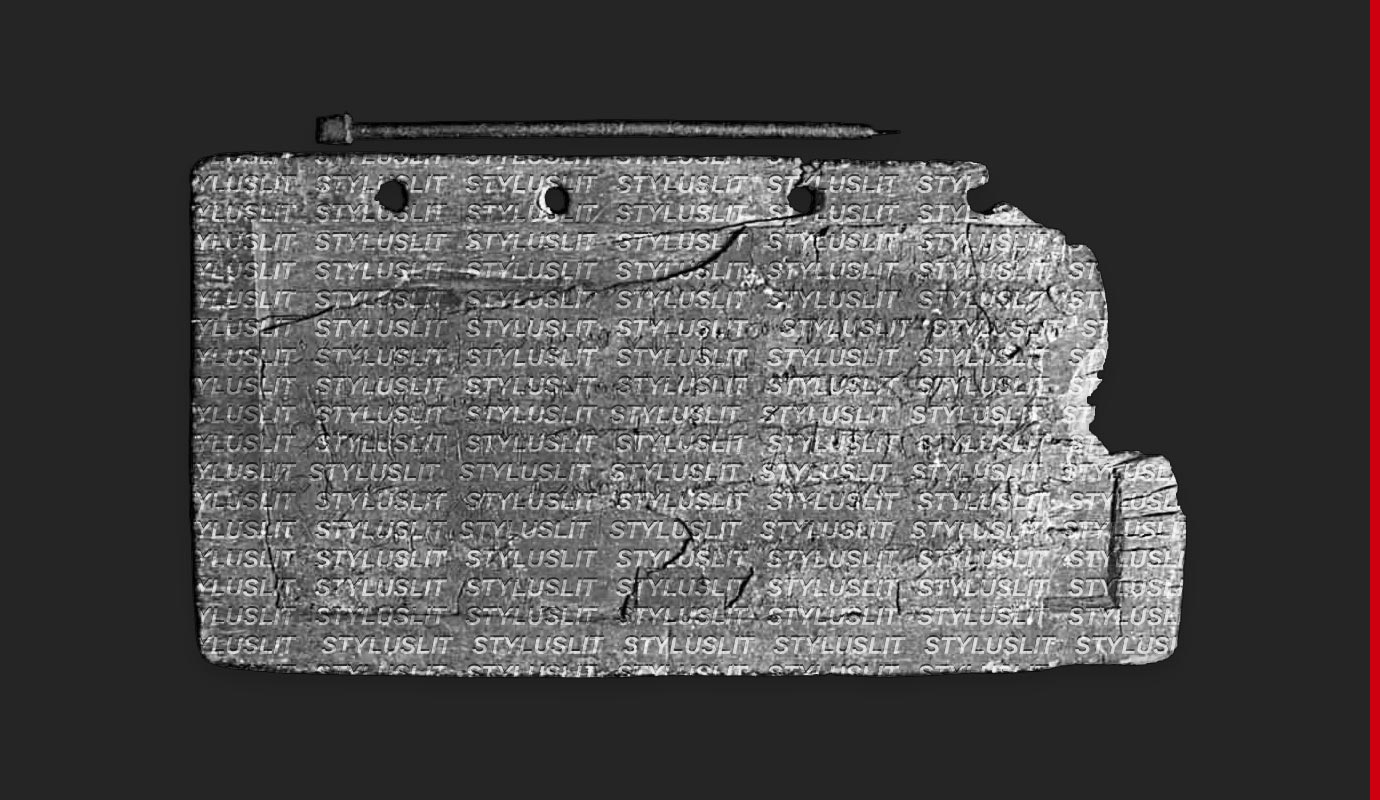Calanthe Press, 2022
Reviewed by Alison Clifton, StylusLit
When opening a slim volume of poetry entitled Land Art, a reader might expect a collection of ecopoetics. Instead, Stuart Cooke offers what might be termed “egopoetics.” A critical reader of both his own work and the poetry of numerous writers from around the (not just English-speaking) world, Cooke offers an exegesis for Land Art in the Forward. Less an apology, defence, or justification, the Forward is more an exploration of questions raised by writing and drawing about the relationship between poet-speaker and land. For Cooke, writing and sketching are both linguistic artforms, and he points to the history of writing in the West as ineluctable from the aesthetic and the visual. He points to the time before the printing press rendered prose and poetry prosaic and illuminated manuscripts grew scarce. As Cooke observes in the Forward to his collection, “the printed alphabet is embedded in long histories of aesthetic decisions.”
He opens and closes the Forward with pairs of questions. First, he asks, “When land compels us to language, what’s happening?” From the outset, then, it is clear that Cooke’s collection does not centre on ecology. Yet, this is no vain attempt to escape anthropocentrism or deny the writer’s identity as a human spectator of nature. Cooke is inhabitant, visitor, and – in a way – interlocuter. In a neatly paradoxical pun, Cooke refers to “being drawn to write about land.” And so it is that he unites image and word.
The standout piece is “Bundanon: a field poetics” (26-40). Composed on Arthur Boyd’s former property on Yuin land, this poem was, as Cooke explains in the Notes, “composed in the field.” It is a marriage between simple images and stanzas. The images are linear markings rendered in black ink. In some ways, they resemble scientific diagrams minus the labels, but with the occasional addition of an arrowed box that interacts with the written lines of verse. In the Notes, Cooke explains his hesitance to “call the accompanying images ‘drawings’ or even ‘sketches,’” and maintains that they are “records of what happened to my pen when it slipped out of English.” In this way, he reenvisages the complex, colourful, gilt-edged illuminated manuscripts of the Middle Ages as mental-manual meanderings of a poet’s pen. Image is distilled to line, intersection, arrow, dot, and star. Words are arranged in short stanzas freed from the bounds of initial capital letters and full stops (although an occasional slash, question mark, or pair of parentheses appears).
“Edge, Hold” (42-45) includes a declaration of the innate corporeality of existence. Far from apologising for the intrusion of his person and pen in this landscape, Cooke celebrates his inescapably and undeniably bodily perception of the land. He writes, “there’s nothing more beautiful than your body / only with your body could you feel this, could you step forward” (45). Here is a reconciliation with the ego, the self, and the flesh. Cooke responds to himself, as if to allay his anxiety expressed earlier in the collection in “Down the Morning” (19-20): “I am so tired / of my self, / its boring old / yearning” (20). Each line is compressed, composed of no more than twelve letters, symbolising the way in which our experience of the world is confined to the “I” or the “eye.” The encapsulated weariness of his solitary perception lands on the one-word line “yearning.” Cooke invites the reader to peer closely at “yearning”– its shape, appearance, and construction. Observe how it contains the word “ear” and implies the word “eye” through associated idioms of desire, acquisition, and insatiability: “his eyes are bigger than his stomach;” “he’s eyeing off that new sports car;” “he’s feasting his eyes on the beautiful landscape.” For Cooke, yet another idiom is repurposed: “we are all ears.” Yes, we are entirely eyes and ears – we are exclusively sensory beings, but not necessarily solipsistic creatures. This way of experiencing the world must inform our relationship with both land and art, including poetry.
In this way, Land Art feels like an extension of the conversation between Cooke and Ed Saba at The Creative Review, published in May 2021, in which Cooke remarks, “I think there’s a place for egocentric writing.” He maintains that, when he “allows the ego to enter into relation with what’s going on around [him],” it leads to a richer form of writing. Through composing outdoors – in nature, on the land – Cooke says that he feels “surpise[d]” by his poetry as “something… born out of an interaction with the world.”
Cooke seems to have found a way to simultaneously sublimate and celebrate the self. Land Art is a modest volume in both size (48 pages) and subject matter. The self is not erased, effaced, or excused. Instead, the ego’s existence is eased; its existentialist angst extinguished in the way that day is ended at dusk. To borrow a line from the collection’s final poem, “The Space Between” (46), Land Art is poetry that speaks to, from, and “at the very moment the light vanished” (46). We cannot vanish or banish the ego, but we may, at times, vanquish the doubts that plague us as sensory beings. Humans communicate with each other, the land, and, ultimately, the self. In this way, art, artist, and subject merge to form a pleasing whole.
